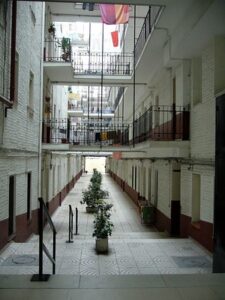Higher education institutions aren’t the only ones struggling with the consequences of neglected facilities maintenance. The enormous cost of ignoring infrastructure problems isn’t the only consideration. At some point (as every administrator knows) it becomes less expensive to replace a facility than it is to repair it.
Everyone likes new facilities, but administrators should not be rewarded for their policy of patient neglect. State legislatures around the country are being forced to devote additional resources to addressing the facilities maintenance neglect that various agencies and departments have engaged in for years.
For example, Kona Community Hospital serves West Hawaii. In fact, it is the only hospital that provides inpatient services to this area of the state. Right now, the bill for years of facilities maintenance neglect stands at an estimated $19M. Without the money, hospital administrators say that they may be forced to close the building. The hospital complex is more than 50 years old. Over time, it has accumulated a range of systems that the hospital requires to provide medical and surgical services. That includes air conditioning, positive pressure systems, ventilation, emergency backup systems – the list goes on.
Administrators complain that the systems have not been replaced in decades. They blame chronic underfunding by the state legislature for the lack of action on systems that should have been replaced years earlier. Who is responsible for replacing the systems? The hospital administration, of course.
Failing to perform facilities maintenance is wasting public dollars
In Nebraska, the Department of Correctional Services says that the time to address neglected facilities maintenance is past, and the only thing left to do now is build a new prison to replace the Nebraska State Penitentiary. To be fair, the NSP was built in 1869. It has been remodeled and expanded numerous times since then.
A medium security dormitory was added in the 1950’s. The oldest cell blocks, which dated to the 19th century, were replaced in 1980. 200 new beds were added to the facility in 1998. A space previously used for segregation was transformed into a minimum-security holding area in 2020. So, it’s not as though the facility is a time capsule.
For publicly funded agencies and institutions, the solution seems simple. Any institution that receives state funding must be required to budget a minimum of 1% of total replacement value of the facility every year for maintenance projects. In WCC’s case, this would be about $3.6M. It’s a manageable amount. WCC currently has a budget of about $120M. That’s 3% of the budget and about $3 per square foot.
Such a rule may mean the administration has less money for hiring more administrators. That could work, especially if it means that the sewer connection to the campus won’t get blown apart twice in the space of 10 days. (It seems like a fair compromise.) It may also mean that administrators will be forced to prioritize things like energy efficiency over new construction. Or maintaining the current campus footprint in good condition instead of building a quasi-private health club or a hotel.
The only way the administrators of publicly funded institutions will prioritize maintenance is if the decision to perform maintenance is taken completely out of their hands.
Photo Credit: Paul Lim


























